This was published 6 years ago
Lewa House, Kenya: See Africa's Big Five in one special place
By Sue Williams
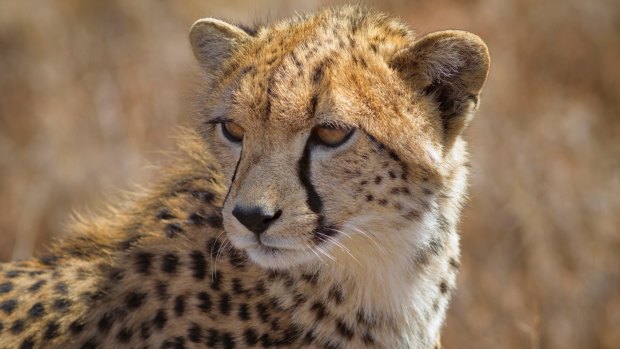
A young cheetah.
When wildlife legend Sir David Attenborough decided to make a new TV series about Africa, his producers were faced with a seemingly insurmountable problem.
The veteran broadcaster was nearing his 90th birthday and couldn't travel with ease all around the continent for his pieces to camera in each location. So instead they came up with an ingenious solution: find one place that had examples of each type of African landscape to serve as vastly different backdrops to his appearances on screen.
And so Sir David ended up in Lewa, a massive 160-square-kilometre wildlife conservancy and UNESCO World Heritage site in the middle of Kenya, by the foothills of Mount Kenya.
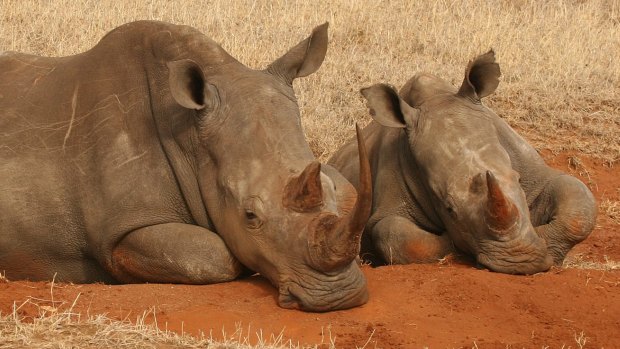
Rhino in Lewa, Kenya.
As a bionomic microcosm of Africa, it was perfect, with forest, rainforest, savannah, dry desert, mountain moorland and swamp. It's also so beautiful, it's the place Prince William – a long-time Lewa fan since spending his uni gap year there – chose to propose to Kate Middleton while on safari in 2010.
Even more critically, Lewa has an incredible variety of wildlife. One guest a few years ago took an astonishing photograph with four of the Big Five in the same frame; lion, buffalo, elephant and rhino. Everyone gathered around to marvel … until someone spotted, on a branch of a tree above the group, a leopard lying there.
"No one could believe it," says Calum Macfarlane who, with wife Sophie Brown, a fourth-generation Lewaian, runs the lodge. "I've never seen anything like it before, or since."
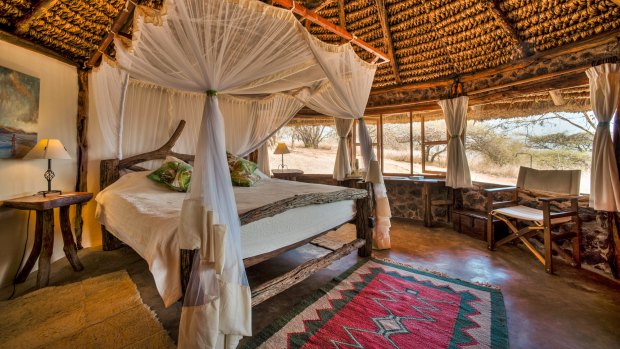
A Lewa family cottage.
You forget such things at your peril, however. A few weeks ago, Macfarlane got out of his vehicle for a closer look at a rarely seen bird, an African finfoot, wandered into the bush and came face to face with a lioness with newly born cubs. He backed away, she mock charged, he backed further away, and eventually he made it safely into the vehicle.
Animals have been protected here since Brown's great-grandfather took it over and gradually expanded the conservancy. Her uncle set up a black rhino sanctuary in 1983, which in 2015 became East Africa's first local community-managed wildlife sanctuary.
Now, it has everything, including rhino calves trotting after their mamas – it has no less than 11 per cent of Kenya's black rhino population – baby elephants suckling, and species unique to this part of Africa: the prettily patterned reticulated giraffe; the Beisa oryx; and the largest population of endangered thin-striped Grevy's zebra in the world.
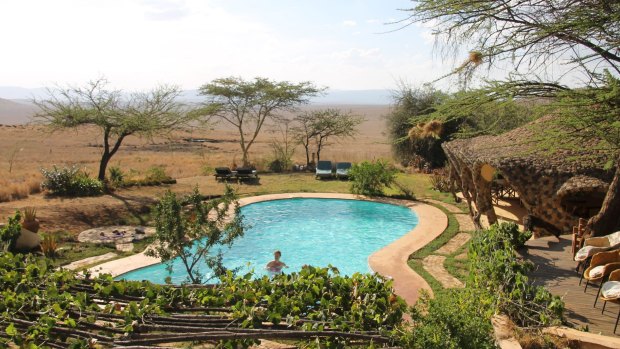
The swimming pool at Lewa House.
Many of the inhabitants are so used to humans they don't turn a hair when you drive up to observe them.
As a result, visitors often become the butt of jokes. At some of the new stone Gaudi-esque "earth pod" accommodation, designed to blend into the landscape, there are open-air baths for guests to enjoy under the wide African skies with a glass of chilled champagne, a wood-burning stove and Mount Kenya as the backdrop – but only in daylight. Too many considering a bath at night under the stars have heard Macfarlane's jest about pouring in a little olive oil, pepper and salt to marinade themselves ready for the lions.
Occasionally, visitors do get nervous. A hot-water bottle is always waiting for you in bed at night when you return to your eco pod or stone-and-thatch cottage. One man became so scared at feeling a warm lump under the covers of his bed, he sounded the alarm …
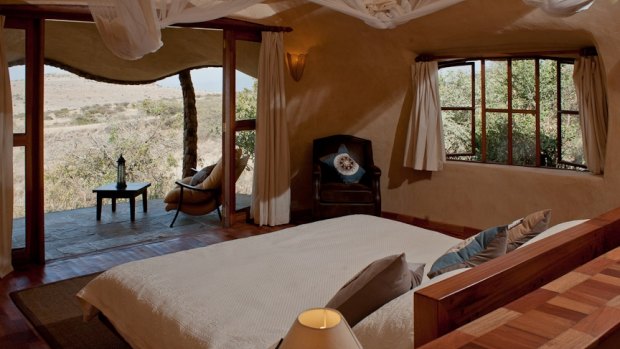
A bedroom in one of Lewa's four earth pods.
But generally guests sleep soundly after full days of game drives, game walks, horse or camel riding and meals in the bush, all with guides from local tribes. There are also scenic flights in the yellow bi-plane, helicopter rides over the conservancy and picnics on the cliffs, fishing, swimming and eating under the stars.
With Africa still considered the cradle of mankind, there's even an archaeological site at the conservancy with hand tools and axes that have been excavated by the famous Leakey family and dated to half a million years old. In addition, there are visits to a nearby Maasai village to marvel at one of the most fascinating cultures left in the world.
Quite simply, it's one of the most marvellous places on the African continent to go to see wildlife and meet the local tribes, and sample the warm hospitality of a family-run lodge, dedicated to conservation. And let's face it, if it's good enough for Sir David Attenborough and Prince William …
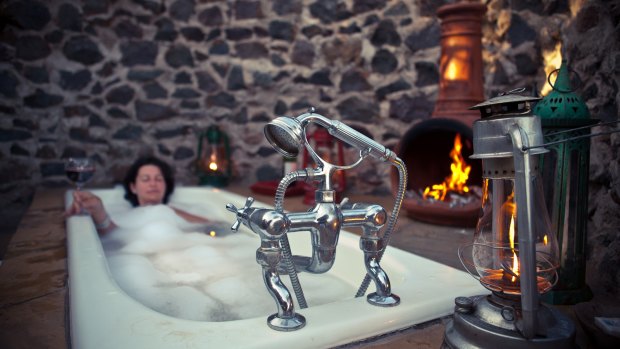
An outdoor bath at an earth pod.
TRIP NOTES
MORE
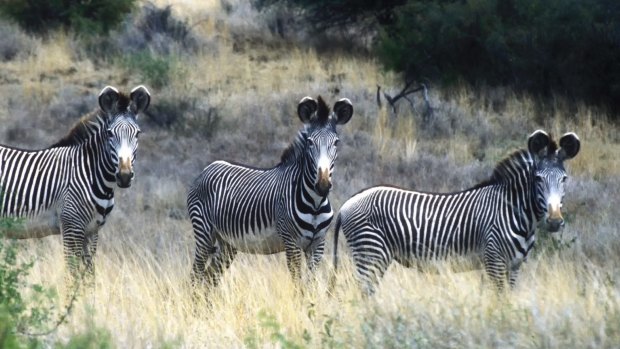
The Grevy's zebra is the largest of all wild equines. The stripes are narrow and close set, but broader on the neck.
FLY
South African Airways flies to Nairobi via Perth and Johannesburg, and Safari Air flies direct from Nairobi to Lewa
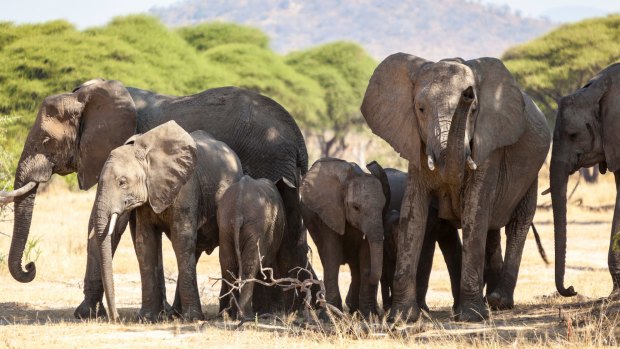
African elephants on the grasslands.
STAY
Lewa House has three separate luxury cottages and four "earth pods", all with beautiful decks for viewing animals, as well as the main house with sofas around a fire, the main dining room, pool and other dining areas, from which many animals can always be seen. Much of the food is organically home-grown. See lewahouse.com Book via The Classic Safari Company classicsafaricompany.com.au Ph (02) 9327 0666
Sue Williams travelled courtesy of The Classic Safari Company and South African Airways.
Sign up for the Traveller Deals newsletter
Get exclusive travel deals delivered straight to your inbox. Sign up now.